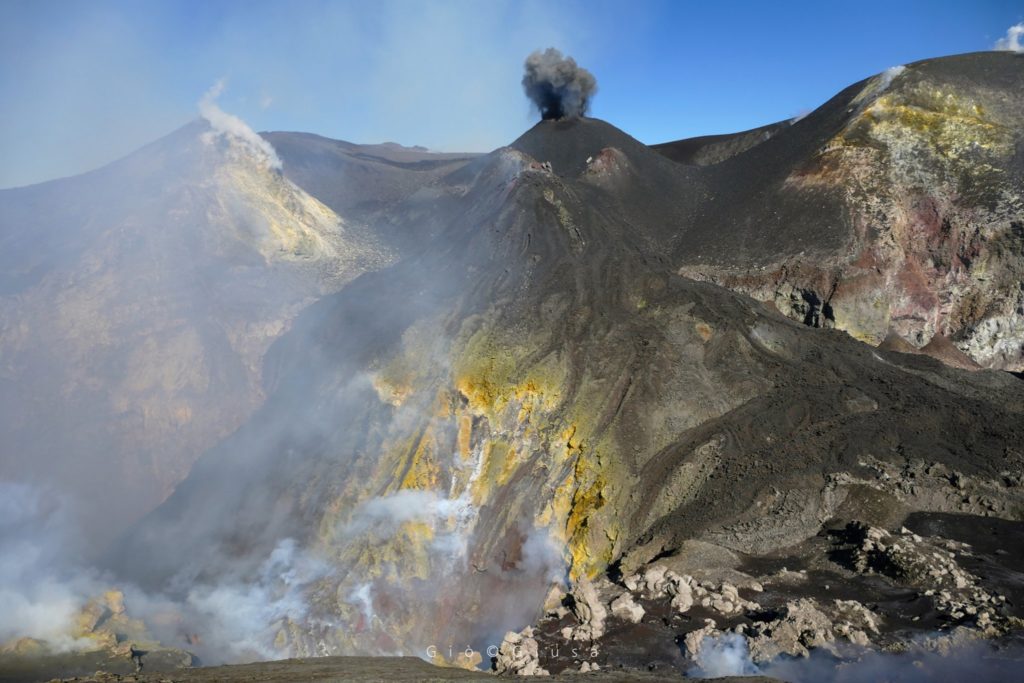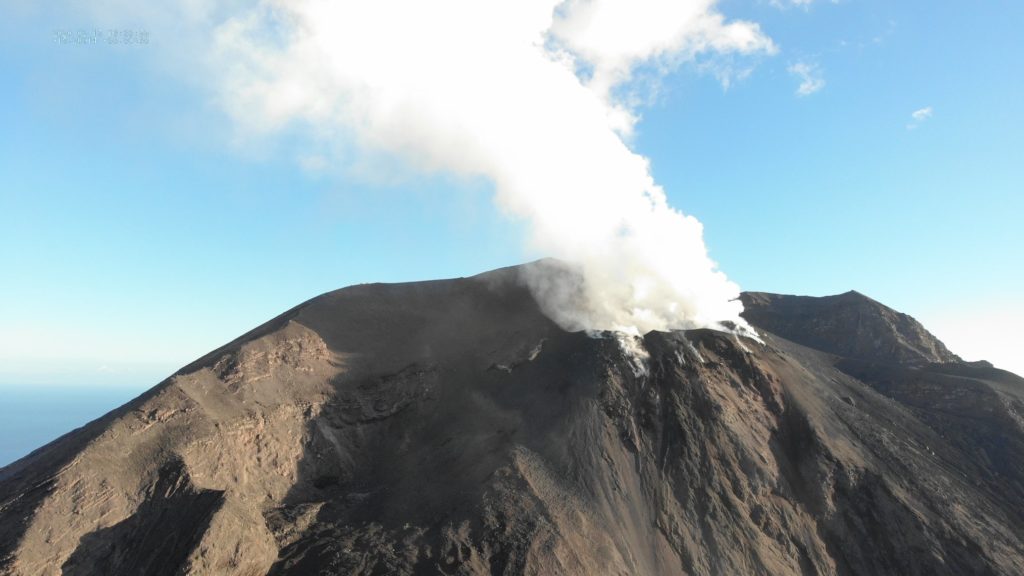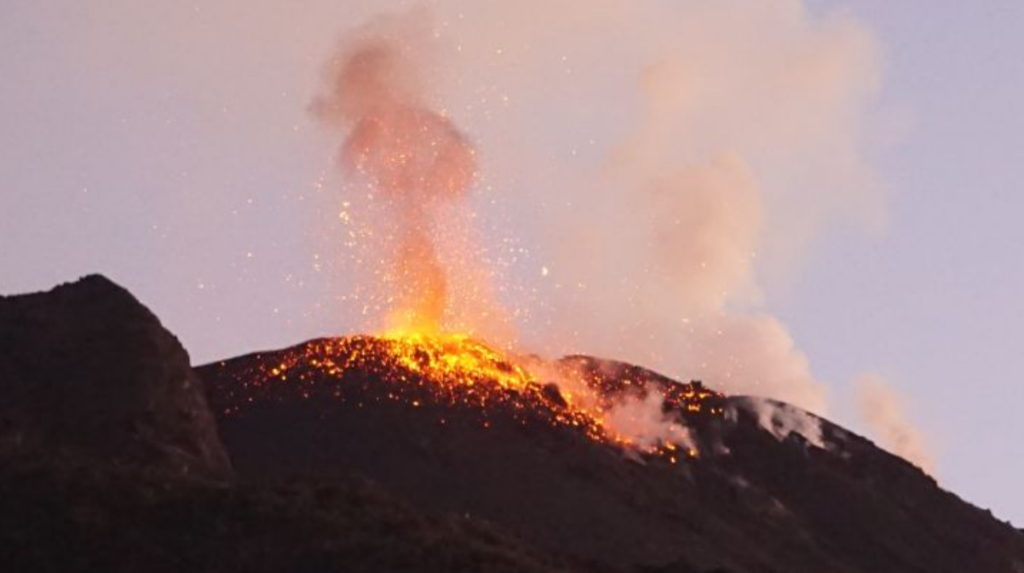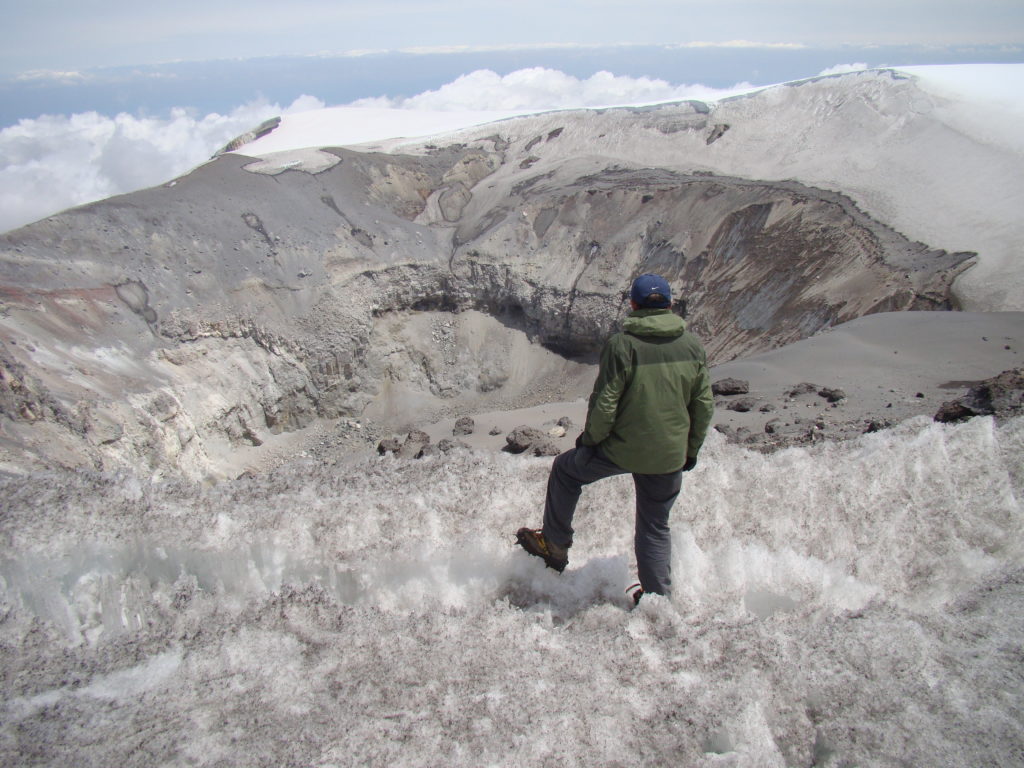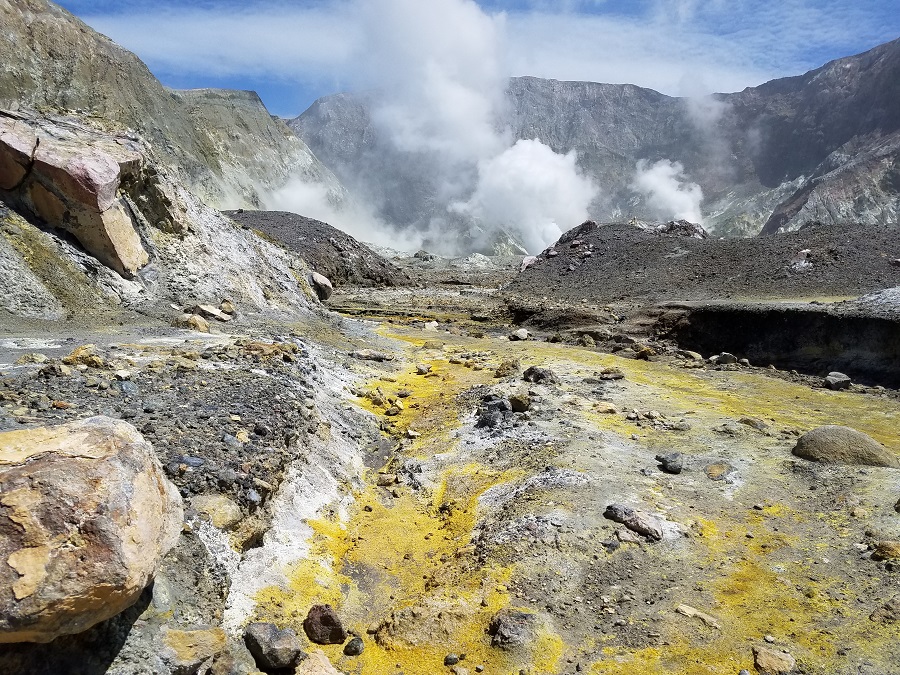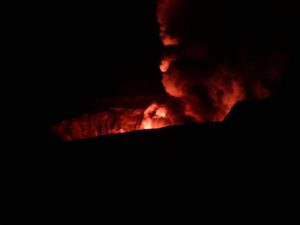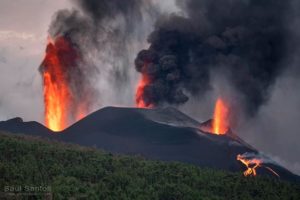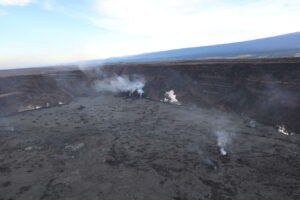February 19 , 2020 .
Italy / Sicily , Etna :
Weekly bulletin from 10/02/2020 to 16/02/2020 (issue date 18/02/2020).
In light of the monitoring data, it is highlighted:
1) VOLCANOLOGICAL OBSERVATIONS: Episodic strombolian activity of the New Southeast Crater. Strombolian and effusive intra-crater activity of the Voragine crater. Ordinary degassing activity with low and discontinuous ash emissions from the northeast crater.
2) SEISMOLOGY: weak fracturing activity
3) INFRA-SOUND: weak infrasonic activity,
4) DEFORMATIONS: The Etna soil deformation monitoring networks have not shown any significant variation to report during the last week.
5) GEOCHEMISTRY: the SO2 fluxes are at a medium level, the HCl flux is at a medium-high level. The flow of CO2 from soils is at medium-low levels. The partial pressure of dissolved CO2 does not show significant variations. The isotopic ratio of helium (data from January 28) is on medium-high values. No update on the CO2 / SO2 ratio is available. The last figure for January concerns the average values.
VOLCANOLOGICAL OBSERVATIONS:
The volcanic activity in the summit craters of Etna was monitored during the week by analyzing images from the network of surveillance cameras from the INGV Catania section, Etneo Observatory (INGV- OE) and thanks remote observations by INGV staff in the field. Visibility conditions were generally satisfactory, despite some periodic limitations due to cloud cover. During the period under review, the activity of Etna was essentially characterized by an explosive and effusive activity of the Voragine crater (VOR) and an ordinary degassing activity, accompanied by weak and intermittent ash emissions from the crater Northeast (NEC) and New Southeast Crater (NSEC). In addition, between February 10 and 11, episodic strombolian activity was observed in the New Southeast Crater (NSEC).
The New Southeast Crater (NSEC), from the afternoon of February 10, showed an obvious thermal anomaly, clearly visible from the Montagnola thermal camera (EMOV), in correspondence with the « cone of the saddle « . From 20:10 UTC, an activity characterized by isolated Strombolian explosions was observed first, some of which were more energetic. This activity intensified about two hours later, around 10:10 p.m., then reached its peak between 3:49 a.m. and 3:57 a.m. UTC on February 11, when a series of explosions was observed, sometimes simultaneously in the New Southeast Crater (NSEC) and in Voragine (VOR), more energetic than those observed the previous hours. The explosive activity ceased immediately after and, already around 11 p.m. UTC, the thermal anomaly which had appeared in the early afternoon of February 10 had also disappeared.
Volcanic tremors:
During the week in question, the average amplitude of the volcanic tremort showed fluctuations around the average values. The sources of the tremor are located under the summit craters between 2000 and 2500 m above sea level, above average sea level.
Source : INGV.
Read the whole article : file:///C:/Users/Utilisateur/AppData/Local/Packages/Microsoft.MicrosoftEdge_8wekyb3d8bbwe/TempState/Downloads/BollettinoEtna20200218%20(1).pdf
Photos : Gio Giusa .
Italy , Stromboli :
Weekly bulletin from 10/02/2020 to 16/02/2020 (issue date 18/02/2020).
In light of the monitoring data, it is highlighted:
1) VOLCANOLOGICAL OBSERVATIONS: During this period, a normal explosive activity of strombolian type was observed accompanied by degassing activities. The hourly frequency of explosions fluctuated between average values (12 events / h on February 11) and medium-high values (18 events / h on February 16). The intensity of the explosions was mainly medium-low in the area of the North crater and medium-high in the area of the Center-South crater.
2) SEISMOLOGY: The seismological parameters do not present significant variations, with the exception of the increase in the amplitude of the tremor and the amplitude of the tremors of explosions from 14/02.
4) DEFORMATIONS: Stromboli soil deformation monitoring networks did not show any significant variation to report for the period considered.
5) GEOCHEMISTRY: The flow of SO2 is at a medium-low level The CO2 / SO2 ratio is at an average value (last update on 02/10/2020). The isotopic ratio of dissolved helium in the aquifer is at low-medium levels.
VOLCANOLOGICAL OBSERVATIONS.
The analysis of the images recorded by the cameras placed at an altitude of 400m, at an altitude of 190m and at Punta dei Corvi made it possible to characterize the eruptive activity of Stromboli. During the reporting period, the explosive activity was mainly produced by at least 3 (three) eruptive vents located in the area of the North crater and by at least 3 (three) eruptive vents located in the area of the Center-South crater . All the vents are located inside the depression which occupies the crater terrace. Due to unfavorable weather conditions, the visibility of the crater terrace on February 12 was insufficient for a correct description of the eruptive activity.
In the North zone, the explosions were mainly low (less than 80 m high) and medium (less than 150 m high), sometimes high (greater than 150 m high) emitting coarse materials (lapilli and bombs). In many explosions, the fallout covered the outer slopes of the area overlooking the Sciara del fuoco and many blocks rolled a few hundred meters before stopping along the Sciara. The average frequency of explosions in zone N varied between 3 and 12 events / h.
The explosive activity of the Center-South zone produced explosions of coarse materials mixed with fine materials of medium intensity (less than 150 m high) and high (the products exceeded 250 m high). In some explosions, the products have fallen into the upper part of the Sciara. The frequency of explosions in the Center-South zone varied between 4 and 11 events / h.
The amplitude of the volcanic tremor generally had medium-low values, showing an increase from 14/02 with some oscillations on medium-high values
Source : INGV.
Read the whole article : file:///C:/Users/Utilisateur/AppData/Local/Packages/Microsoft.MicrosoftEdge_8wekyb3d8bbwe/TempState/Downloads/BollettinoStromboli20200218%20(3).pdf
Photos : Massimo Cantarero, Emanuela De Beni (INGV), et Karen Strehlow (GEOMAR) , INGV .
Colombia , Nevado del Ruiz :
Weekly newsletter of the Nevado del Ruiz volcano
The level of activity continues at the level of yellow activity or (III): changes in the behavior of volcanic activity.
Regarding the monitoring of the activity of the Nevado del Ruiz volcano, the COLOMBIAN GEOLOGICAL SERVICE reports that:
The Nevado del Ruiz volcano continues with an unstable behavior. During the past week, some of the parameters monitored have shown variations reflecting the instability of the volcanic system. An acceleration of the volcanic process and therefore changes in the level of activity of the volcano is not excluded.
Seismicity related to fluid dynamics inside volcanic conduits showed a slight increase in both the number of events recorded and the seismic energy released, compared to the previous week. This seismic activity was characterized by the presence of continuous volcanic tremors, pulses of volcanic tremors, long and very long period earthquakes. The earthquakes presented varying energy levels and spectral content. Some of these signals were associated with gas and ash emissions, confirmed by cameras installed on the volcano and by reports from field personnel.
The seismicity generated by the fracturing of rocks (volcano-tectonic type) decreased in number of earthquakes and in released seismic energy, compared to the previous week. This type of seismicity was located in the South-South-West, North and North-East sectors of the volcanic crater. The depths of the earthquakes ranged from 0.6 to 8.2 km. The maximum magnitude recorded during the week was 0.9 ML (local magnitude), corresponding to the earthquake recorded on February 12 at 11:06 a.m. (local time), located 8.3 km north of the Arenas crater, at a depth of 8.1 km.
The deformation of the volcanic surface, measured from electronic inclinometers and GNSS (Global Navigation Satellite System) stations, showed no significant change or deformation process during the week. In tracking information provided on the Mirova and NASA FIRMS web portals, they have reported low-energy thermal anomalies in the volcano in the past week.
The Nevado del Ruiz volcano continues at the yellow activity level.
Source : SGC.
Photo : Leonardo Real.
New Zealand , White Island :
Whakaari/White Island: Elevated volcanic unrest continues
Published: Wed Feb 19 2020 11:55 AM
Volcanic Alert Level remains at 2
Aviation Colour Code remains at Yellow
• Whakaari/White Island remains in an elevated state of unrest
• Volcanic gas fluxes are declining slightly
• Aerial observations confirm presence of high temperature fumaroles
• The Volcanic Alert Level remains at Level 2; Aviation Colour Code remains at Yellow
As a continuation of our monitoring of Whakaari/White Island, we conducted two aerial-based measurements and observations of the island in the past two weeks. A gas flight confirms the steady decline in both CO2 and SO2 flux since the eruption, albeit at slightly elevated levels. The result from this flight is consistent with recent gas measurements and indicates the continued presence of shallow magma beneath the primary vent area. This is further confirmed by a helicopter-based thermal infrared survey of the five lava lobes and fumarolic gases in the vent area. Temperatures exceeding 660 °C mean that the system remains very hot with no sign of cooling over the past two weeks. Despite these high fumarole temperatures, a small pond of water is present in the primary vent area and small-scale jetting is now occurring. This is similar to the activity seen in September-December 2019.Our volcano monitoring team met on Monday 17 February and evaluated the eruption likelihood, based on recent data and observations.
The team consider an eruption to be very unlikely (1 %) in any 24-hour period. We will reassess next month, or earlier if needed.
Although very unlikely, the active vent area remains potentially unstable and an eruption could occur with limited precursory activity. Plausible eruption styles include collapse of unstable material around the vents, or a significant decrease in gas emissions to allow the rapid ingress of water onto the shallow magma body, causing a sharp, explosive event.
Should any explosive activity produce an ash cloud, the likelihood of ash affecting the mainland remains very low. Under suitable weather conditions, the gas and steam plume may be noticed on the mainland as weak acid rain.
Satellite data retrieved over the last two weeks shows continued land movement, at a reduced rate along the west wall of the Main Crater and the 1914 landslide scarp. No obvious changes were noted along the landslide scarps on the latest observation flight (12 February).
GNS Science and our National Geohazards Monitoring Centre continue to closely monitor Whakaari/White Island for further signs of activity. Further updates will be provided as the situation evolves.
Source : Geonet / Geoff Kilgour / Duty Volcanologist.
Photos : Satellite image ©2019 Maxar Technologies , Weatherboy.


